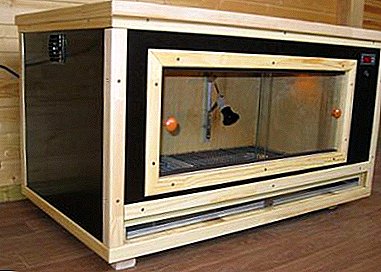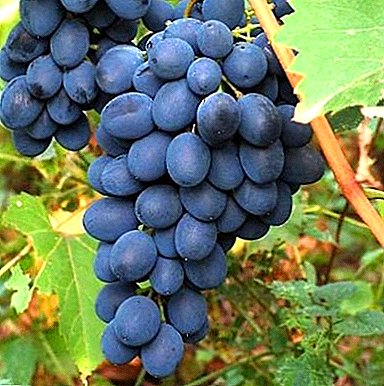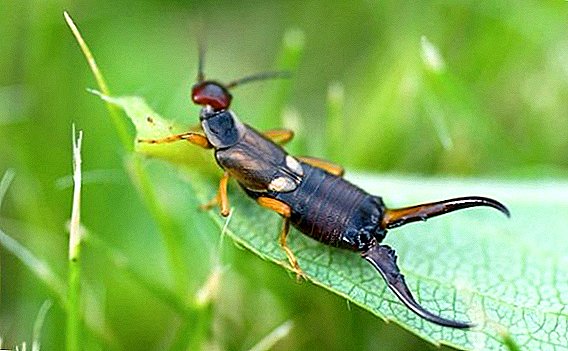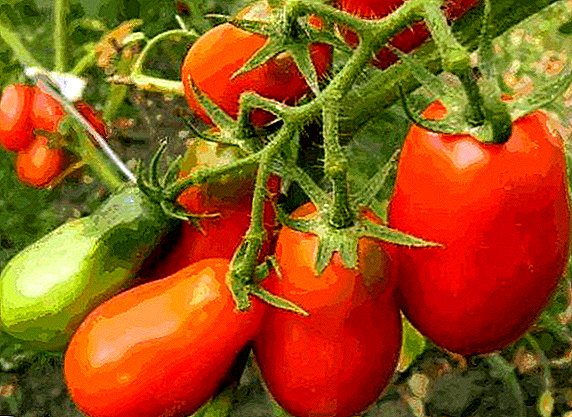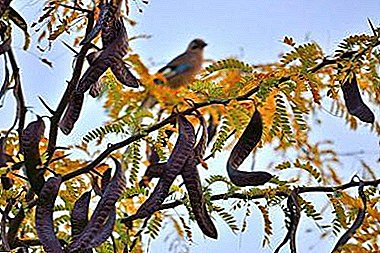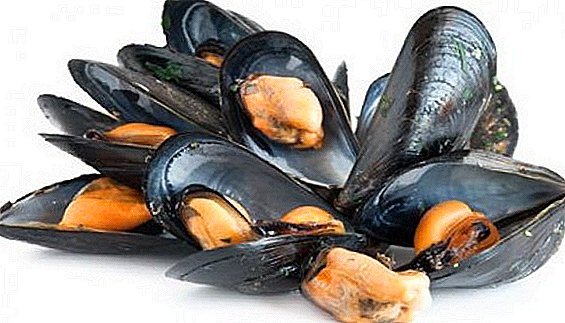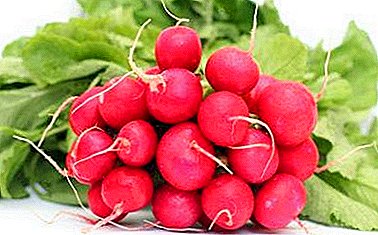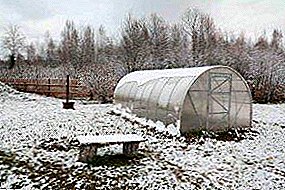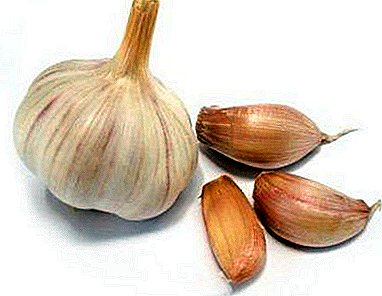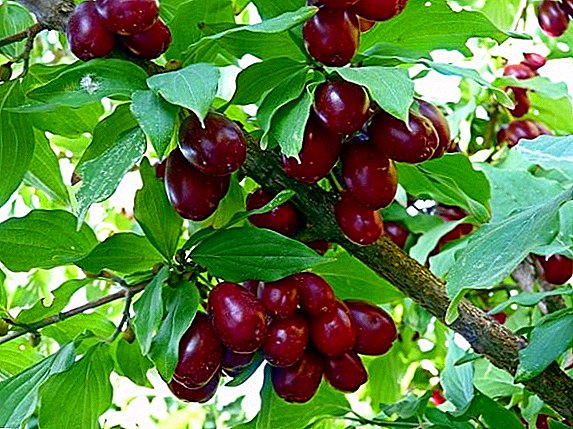 Thanks to the healing properties dogwood - The desired plant in every garden. Its small sourish-sweet berries are not only able to normalize blood pressure and treat many other ailments, but also enjoy success with cooks. Dogwoods make delicious jams, jams, compotes and even manage to use them as olives. The only trouble is that culture in inept hands does not produce fruit. Let's try to figure out what conditions the dogwood needs for planting and care.
Thanks to the healing properties dogwood - The desired plant in every garden. Its small sourish-sweet berries are not only able to normalize blood pressure and treat many other ailments, but also enjoy success with cooks. Dogwoods make delicious jams, jams, compotes and even manage to use them as olives. The only trouble is that culture in inept hands does not produce fruit. Let's try to figure out what conditions the dogwood needs for planting and care.
Planting dogwood
This shrub lives 250 years, grows no higher than two to five meters in height, produces fruits every year. He likes light, but he also feels comfortable in the shade. Well adapted to droughts and cold. Moreover, the plant painlessly endures a forty-degree frost. It can be trimmed, forming a crown in the form of a tree or a bush. And for planting any soil will be suitable. At first glance, it seems that the dogwood itself will grow without much human effort. And yet, some secrets of the tree will help to grow quickly and generously bear fruit.
Optimum timing and site selection
The most suitable for planting this fruit plant is the period from the beginning of spring until the end of summer. Dogwood seedlings take root in the fall, just need to catch before the first frost. For unpretentious shrubs fit any place and even rocky soil. It will grow under the slope on the unprotected north and northeast side.
The yield will increase the fertilizer-rich, well-loosened soil, sufficient lighting and humidity. When choosing a site, it is important to take into account the placement of groundwater - the cornel root system forks at the level of one meter from the ground surface. The tree does not take root in the marshlands. And also you should avoid clay substrates and dimly lit places. The first five years for the cultivation of dogwood is ideal penumbra. Later, shrubs can be moved to a well-lit corner of the garden. To save space, it is recommended to plant dogwood between old trees, which with its shadow will protect its roots from drying out. Plants get on with all fruit, except for walnut. Earth should be drained, enriched with calcium, alkaline.
Important! To check the acidity of the soil at home, put a couple of drops of vinegar on a handful of soil. In an alkaline medium, small bubbles are formed, which indicate a sufficient amount of lime.
How to choose seedlings for planting
 When buying a seed, special attention should be paid to the root: the more powerful - the faster the tree grows. And also remember: a plant in a single copy of fruits will not give, several bushes should grow nearby. You should be alerted by weak, weathered, thin and lifeless roots with obvious signs of disease. It is worth buying powerful saplings with two or three root forks of at least 30 cm in length. Make sure that the bark on the trunk was whole, without wrinkles, and the branches - without damage and cracks. To finally verify the viability of the vending seedling, make a small incision on the bark. If the "wound" is green, you are not mistaken with the choice; if it is brown, look for another dogwood.
When buying a seed, special attention should be paid to the root: the more powerful - the faster the tree grows. And also remember: a plant in a single copy of fruits will not give, several bushes should grow nearby. You should be alerted by weak, weathered, thin and lifeless roots with obvious signs of disease. It is worth buying powerful saplings with two or three root forks of at least 30 cm in length. Make sure that the bark on the trunk was whole, without wrinkles, and the branches - without damage and cracks. To finally verify the viability of the vending seedling, make a small incision on the bark. If the "wound" is green, you are not mistaken with the choice; if it is brown, look for another dogwood.
The rhizome of the plant should be sufficiently moist. If necessary, long-term transportation of its wrapped with a damp cloth and placed in a spacious plastic bag. If the roots have dried up during the delivery, they should be put in a container with water for several days before planting. In cases where after purchase it is not possible to immediately plant a seedling, it is instilled with a slant in the shadow. It is important that the substrate covers not only the root system, but also half of the seed. Abundantly watered shrubs in this form can be stored for a month.
Stepwise landing process
Have experienced gardeners we managed to learn how to plant dogwood. To begin with, the seedling needs to be once again examined and removed from it the branches and roots damaged during the transportation. Then thoroughly process the root system of the previously prepared clay mash. If planting occurs in the fall, do not forget to carefully remove the foliage from the tree. Replanting recommend plants that are more than two years old.  Planting holes should be shallow, but easily accommodate the rhizome. The best option is deepening from 30 to 50 cm. About 15 pebbles or haydite must be laid on the bottom. If the soil is poor, drain on a third sprinkled with sheet soil. Dogwood loves potassium rich land. It can be enriched with lime, which is mixed with the substrate at the rate of 150 g per 1 mg. Remember: the culture is sensitive to fertilizing, so when planting do not add any humus, no manure, no store flower mixtures, no mineral fertilizers. Only water and earth.
Planting holes should be shallow, but easily accommodate the rhizome. The best option is deepening from 30 to 50 cm. About 15 pebbles or haydite must be laid on the bottom. If the soil is poor, drain on a third sprinkled with sheet soil. Dogwood loves potassium rich land. It can be enriched with lime, which is mixed with the substrate at the rate of 150 g per 1 mg. Remember: the culture is sensitive to fertilizing, so when planting do not add any humus, no manure, no store flower mixtures, no mineral fertilizers. Only water and earth.
Did you know? For the long ripening of the fruits of the cornel, their rich red color and tart taste, the Crimean Tatars called the plant a “shaytan berry”.
When the pit is half filled with fertile land, it is generously watered. After soaking the water can be placed in the hole of the seedling. The roots should be carefully straightened, and the root neck hiding 2 to 3 cm under the ground. When falling asleep, make sure that voids do not form around the roots. To avoid them, it is necessary to trample well the planted material and water it plentifully. The site of the graft should rise 2 cm above the ground. Over time, when the plant settles, it will drop to its level.
Dogwood must necessarily be mulled about 10 to 15 cm. The procedure is carried out so that the roots that lie superficially do not dry out. To this end, you can use pine needles, sawdust, plain straw or hay. Given the durability of plants during large-scale planting, it is important to anticipate their prospective increase in volumes. The cornel garden is recommended to be laid according to the 6 × 5 m scheme. Young trees can be temporarily compacted by other cultures, which will be removed to the extent of necessity. A week after planting, the ground near the plant must be re-compacted and watered.
How to care for dogwood
 Despite the unpretentiousness of the plant, competent care of garden cornels consists in timely watering and feeding, sanitary pruning, removal of weeds and systematic tillage. Culture does not tolerate excess moisture, so when watering it is necessary to take into account its age, the proximity of groundwater, moisture levels and soil characteristics. On average, each plant needs at least two buckets of water. Watering can be carried out in the done recess or directly pouring the holes around the bushes. After pouring dogwood, all the furrows need to be leveled. Water for watering is defended, allowing it to warm up. Do not let the soil dry out - this is stressful for the plant. To increase yields, dogwood is fertilized several times a year. It is believed that during the growing season the plant needs nitrogen-phosphorus mixture, and in the fall - potash.
Despite the unpretentiousness of the plant, competent care of garden cornels consists in timely watering and feeding, sanitary pruning, removal of weeds and systematic tillage. Culture does not tolerate excess moisture, so when watering it is necessary to take into account its age, the proximity of groundwater, moisture levels and soil characteristics. On average, each plant needs at least two buckets of water. Watering can be carried out in the done recess or directly pouring the holes around the bushes. After pouring dogwood, all the furrows need to be leveled. Water for watering is defended, allowing it to warm up. Do not let the soil dry out - this is stressful for the plant. To increase yields, dogwood is fertilized several times a year. It is believed that during the growing season the plant needs nitrogen-phosphorus mixture, and in the fall - potash.
Some gardeners periodically alternate humus with compost, or annually at the beginning of summer they pour a mixture of water and chicken manure into the bushes at a ratio of 10: 1. Others prepare fertilizers from 0.03 kg of ammonium nitrate and a humus bucket. Also as a fertilizer suitable "Agrolife", which sprinkle the upper soil around the fruit culture. At the end of the summer, half a liter of wood ash is poured under each adult dogwood.  And after harvesting it would be good to add 0.1 kg of superphosphates. But whatever you feed the dogwood, lime remains the most important fertilizer. It is this that ensures the presence of potassium in the substrate, which affects the future harvest. With proper care, regular soil treatment is very important. It is made annually at least six or seven times, regardless of the age and fertility of the plant. Begin in the spring and finish in the autumn, after harvesting the berries. The culmination of soil loosening around the cornel is its mulching.
And after harvesting it would be good to add 0.1 kg of superphosphates. But whatever you feed the dogwood, lime remains the most important fertilizer. It is this that ensures the presence of potassium in the substrate, which affects the future harvest. With proper care, regular soil treatment is very important. It is made annually at least six or seven times, regardless of the age and fertility of the plant. Begin in the spring and finish in the autumn, after harvesting the berries. The culmination of soil loosening around the cornel is its mulching.
Important! Up to 25 kg of berries can be harvested from a ten-year-old dogwood tree, and up to 100 kg from a forty-year-old.
All the details of trimming dogwood
Often below the stock rootstock grow wild shoots. They must be removed, otherwise you risk losing the garden plant and acquire a "savage." Dogwood can be grown in the form of a multi-bush or stem tree. Lay the crown in young seedlings. If desired, it is possible to form a garden decoration in a V-shaped or candelabrum form from a fruit bush. If you have a close garden and the issue of saving space is important, for pollination, it is recommended to plant several varieties on one tree.
On the question of how to properly trim the dogwood, gardeners respond briefly: the plant does not need to form a crown at all. In early spring, it removes damaged, dead branches and, if necessary, thin out strongly overgrown and intertwined ones. Plants that are more than fifteen years old need a rejuvenating pruning. It is carried out with a weakened growth at the end of winter, when the bush is still at rest.
Dogwood frost resistance: how to prepare for winter
 The plant is not afraid of even severe winters. Trees will easily survive the frosts familiar to our latitudes. True, young individuals will suffer severe frosts, over 30 degrees. So that this did not happen, the plants are well enveloped for winter. For this fit burlap or agrofibre. And to protect the surface roots, the soil around is carefully mulched. To this end, in the autumn under the cornel rake up all the fallen leaves in the garden. The booms are hidden about 20 cm. A layer of humus or peat can be laid on the ground.
The plant is not afraid of even severe winters. Trees will easily survive the frosts familiar to our latitudes. True, young individuals will suffer severe frosts, over 30 degrees. So that this did not happen, the plants are well enveloped for winter. For this fit burlap or agrofibre. And to protect the surface roots, the soil around is carefully mulched. To this end, in the autumn under the cornel rake up all the fallen leaves in the garden. The booms are hidden about 20 cm. A layer of humus or peat can be laid on the ground.
How to propagate dogwood at home
Culture can be done in several ways. The simplest and most accessible is rooting cuttings. To do this, pin to the ground annual shoots and sprinkle with soil. A year later, with the onset of the rest period, the young process is separated from the maternal process and planted in a permanent place. A more labor-intensive breeding method is grafting. Green cuttings are cut in the beginning and middle of summer. Leaves are removed by one third and kept for more than 6 hours in growth stimulating preparations. After that they land in partial shade, covered with foil. There is a risk that not everyone will take root.  Sorted dogwood diluted by budding. This is done in August and September, since in the earlier period all attempts at vaccination were unsuccessful. For rootstock use well-developed, powerful wild plants. The technique involves the connection of the kidney graft and bark rootstock through a T-shaped incision. The place of vaccination is closely wrapped with tape, while the kidney is left open. In October, the tape is removed. If budding got accustomed, the sheet does not fade. The cornel propagated in this way bears fruit already in the third year of life, since it preserves its maternal characteristics.
Sorted dogwood diluted by budding. This is done in August and September, since in the earlier period all attempts at vaccination were unsuccessful. For rootstock use well-developed, powerful wild plants. The technique involves the connection of the kidney graft and bark rootstock through a T-shaped incision. The place of vaccination is closely wrapped with tape, while the kidney is left open. In October, the tape is removed. If budding got accustomed, the sheet does not fade. The cornel propagated in this way bears fruit already in the third year of life, since it preserves its maternal characteristics.
Professional breeders propagate dogwood seed method. It takes a lot of time and requires a lot of effort and patience, as the seeds germinate long and hard. And dogwood fruiting comes in 7 - 10 year. For planting choose seeds of unripe fruit. If the grains are covered with a hard shell, it can be cut, thus accelerating germination. Otherwise, the embryo will be able to appear only after two or three years. Planted seed in a permanent place and monitor the soil moisture.
Important! To attract bees on flowering dogwood, the plant is sprayed with a weak honey solution.
Cornel Resistance to Diseases and Pests
 Cornels rarely affect pests. But, despite the resistance of the plant, a caring gardener should regularly inspect its branches and trunk. Powdery mildew sometimes appears on the leaves of young specimens. To combat it, it is enough to treat the culture twice with any fungicide. Malignant fungi grow on the dry branches, which eventually migrate to healthy shoots. Often this happens when untimely sanitary cleaning. The affected parts of the tree are removed and henceforth they ensure that no dried foci appear on it. Yellow spots on the leaves, similar to rust, are "removed" by Bordeaux mixture. Fallen leaves must be burned. It happens that the fruit strikes the scarlet, in the fight against which the effect is spraying lime.
Cornels rarely affect pests. But, despite the resistance of the plant, a caring gardener should regularly inspect its branches and trunk. Powdery mildew sometimes appears on the leaves of young specimens. To combat it, it is enough to treat the culture twice with any fungicide. Malignant fungi grow on the dry branches, which eventually migrate to healthy shoots. Often this happens when untimely sanitary cleaning. The affected parts of the tree are removed and henceforth they ensure that no dried foci appear on it. Yellow spots on the leaves, similar to rust, are "removed" by Bordeaux mixture. Fallen leaves must be burned. It happens that the fruit strikes the scarlet, in the fight against which the effect is spraying lime.


